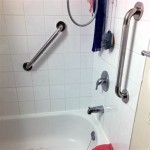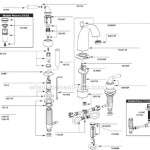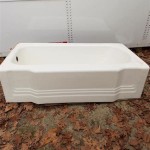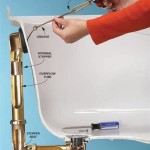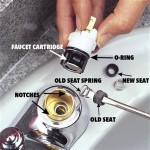Removing Bathtub Caulk With Oscillating Tool
An oscillating tool is a power tool used to cut through different materials by vibrating its blade or accessory rapidly. This tool can be used to remove bathtub caulk, a sealant that fills the gap between the bathtub and the surrounding wall. Removing caulk can be necessary if it is damaged, cracked, or discolored, allowing water to seep behind the tub and cause damage to the subfloor.
Oscillating tools are relatively easy to use and can significantly reduce the time and effort required to remove caulk. Select the appropriate blade or accessory for the job and ensure the tool is firmly attached to the blade. Wear safety glasses and gloves for protection. Start by cutting through the caulk along the edge of the tub with a sharp blade. Take care not to damage the surface of the tub or surrounding wall.
Once you have cut through the caulk, remove any remaining pieces by hand or a scraper. Use a damp cloth to wipe away any excess caulk or debris. If any caulk residue remains, apply a caulk remover and let it sit for a few minutes before wiping it away.
Once the caulk has been removed, the area should be clean and dry before applying a new bead of caulk. If you are not comfortable using an oscillating tool, you can use a utility knife or caulk removal tool to remove the caulk. However, these methods can be more time-consuming and may not be as effective.
An oscillating tool can be a valuable tool for removing caulk from bathtubs, showers, and other areas. With the proper precautions and techniques, you can easily and effectively remove caulk without damaging the surrounding surfaces. Here are some essential tips to consider when removing bathtub caulk using an oscillating tool:
- Choose the right blade or accessory for the job. Several different blades and accessories are available for oscillating tools, each designed for specific tasks. When removing caulk, it is essential to use a sharp blade specifically designed for cutting through caulk.
- Securely attach the blade or accessory to the tool. Before starting any work, ensure the blade or accessory is securely attached to the oscillating tool. A loose blade can be dangerous and can cause damage to the tool or the workpiece.
- Wear safety glasses and gloves when using the oscillating tool. The blade of an oscillating tool can vibrate rapidly, so it is essential to protect yourself from any flying debris. Always wear safety glasses and gloves when operating the tool.
- Start by cutting through the caulk along the edge of the tub. Hold the oscillating tool steady and start cutting through the caulk at a slight angle. Be careful not to press too hard, as you could damage the surface of the tub or surrounding wall.
- Remove any remaining caulk by hand or scraper. Once you have cut through the caulk, use your fingers or a scraper to remove any remaining pieces. You may also use a damp cloth to wipe away any excess caulk or debris.
- Apply a caulk remover and let it sit for a few minutes if any caulk residue remains. This will help soften the caulk and make it easier to remove. After a few minutes, use a damp cloth to wipe away the caulk remover and any remaining caulk residue.
- Once the caulk has been removed, the area should be clean and dry before applying a new bead of caulk. If you are not comfortable using an oscillating tool, you can use a utility knife or caulk removal tool to remove the caulk. However, these methods can be more time-consuming and may not be as effective.

Fein Remove Tub Caulking With The Multimaster 350qsl

How To Remove Caulk Home Repair Tutor

How To Caulk A Shower Or Bathtub Diy Family Handyman

How To Remove Caulk Home Repair Tutor

How To Remove Caulking Easily Allway 3 In 1 Caulk Removal And Tool Review

How To Remove Caulk Home Repair Tutor

How To Remove Silicone Sealant With A Multi Tool

How To Remove Caulk Home Repair Tutor

Rockwell Sonicrafter F80 Electric Caulk Cutter Tool Pipeknife Caulking Tools

Rockwell Sonicrafter F80 Electric Caulk Cutter Tool Pipeknife Caulking Tools
Related Posts

